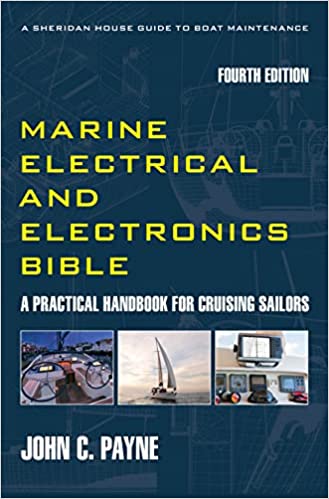Electric Boat Anchor Winches
Electrical installation problems during the setup of an electric boat anchor winches can compromise performance, safety, and reliability. One common issue is using undersized wiring. If the cable gauge is too small for the windlass’s current draw, it can lead to voltage drops, overheating, and even fire hazards. Always use marine-grade, tinned copper wire matched to the windlass’s amperage and run length.
Electric Boat Anchor Winches
Once the electric anchor winch is installed and the cables are installed they require proper protection. When you install protection it is about cable protection, no different to shore power systems. Every primary power supply cable to an electric windlass requires a fuse. These are nominally what are called Slow Blow (time delay) type fuses. They are requirements of the ABYC and the USCG, and some manufacturers integrate this within the control box.
Electric Boat Anchor Winches
Improper grounding is another frequent fault. A weak or corroded ground connection can cause erratic operation or complete failure. Grounding should be secure, corrosion-resistant, and connected to a common ground bus. Faulty or missing circuit protection — such as fuses or breakers — can leave the system vulnerable to overloads. A properly rated breaker should be installed close to the battery.
Long cable runs from distant batteries can reduce efficiency and strain the motor. Ideally, use a dedicated battery bank with short, direct runs. Poor relay or solenoid placement can also result in voltage loss or exposure to moisture, leading to corrosion and intermittent faults.
Control switches must be waterproof and rated for marine use. Loose or exposed terminals can cause shorts or unreliable operation. A methodical, standards-compliant installation with regular inspection ensures safe, dependable anchoring under all conditions.
The 4th Edition of the Marine Electrical Electronics Bible Get your copy and start becoming self sufficient and save money on expensive technician callouts.Electric Boat Anchor Winches
Why are they slow? They are called slow as they are designed not to rupture on short transient duration over-currents that occur when breaking out the anchor, and only when sustained over-currents such as a short circuit or stalled motor occur do they blow. Where solenoid control boxes integrate these and they are located forward close to the anchor windlass, the cable is unprotected, and a circuit breaker or fuse is required for the cable. The protection fuses and circuit breakers must be installed as close as practicable to the power supply source. Make sure you carry a spare fuse as few do! If you have suffered a flat start battery and have put it down to a mysterious leak, check out the anchor windlass connections either at the control box, control circuit or motor terminals. It pays to turn the power off when the boat is unattended.
Electric Boat Anchor Winches
Circuit breakers are also used for overload protection and also circuit isolation. Circuit breakers are selected with a suitable tripping curve are also used, and also may have the "slow blow" characteristic. They are like fuses and delay opening on low-level overloads, and trip only on sustained over-currents. The circuit breaker or fuses should be installed on the supply as close as practicable and accessible to the battery as possible. Typically these range for 400 watt motor with 40 amp current a 50 amp breaker, 600 watt is 55 amp with 70 amp breaker etc.
A comment about automatic thermal cutouts. I have come across these very occasionally and I would caution against using automatic thermal circuit breakers. They trip automatically in overload conditions and reset. Sounds great doesn’t it. The problem is that you have to wait until they reset, which is usually when you desperately need the windlass.
Electric Boat Anchor Winches
Always use DC rated circuit breakers, usually available from the anchor windlass manufacturers, and not the AC rated units as some people install.
Using DC-rated circuit breakers instead of AC breakers is critical for safe and reliable marine electrical installations. DC circuits behave differently than AC, especially during fault conditions. DC current does not naturally pass through zero, making it harder to interrupt; this requires breakers with arc-extinguishing mechanisms specifically designed for DC loads.
Installing AC breakers in DC systems can result in failure to trip during overloads or short circuits, posing serious fire and equipment damage risks. DC-rated breakers are tested to handle continuous current and high fault currents typical in battery banks, inverters, and windlasses.
Voltage ratings also differ: a 120V AC breaker is not suitable for 12V, 24V, or 48V DC systems unless explicitly marked. Always verify the breaker’s voltage and current ratings match the system’s specifications.
In marine environments, using properly rated DC breakers ensures compliance with ABYC standards, protects critical systems, and enhances onboard safety and reliability.
Some boats have automatically resetting circuit breakers for overload protection, however the problem is that you have to wait until it resets, which is usually when you desperately need the windlass, and manual reset breakers offer you some flexibility, although when it trips reset and operate with caution. If the anchor windlass has tripped allow 10-15 minutes for the motor to cool down if it's possible as continued operation may burn the motor out. More electric boat anchor winches information and anchor handling information.
